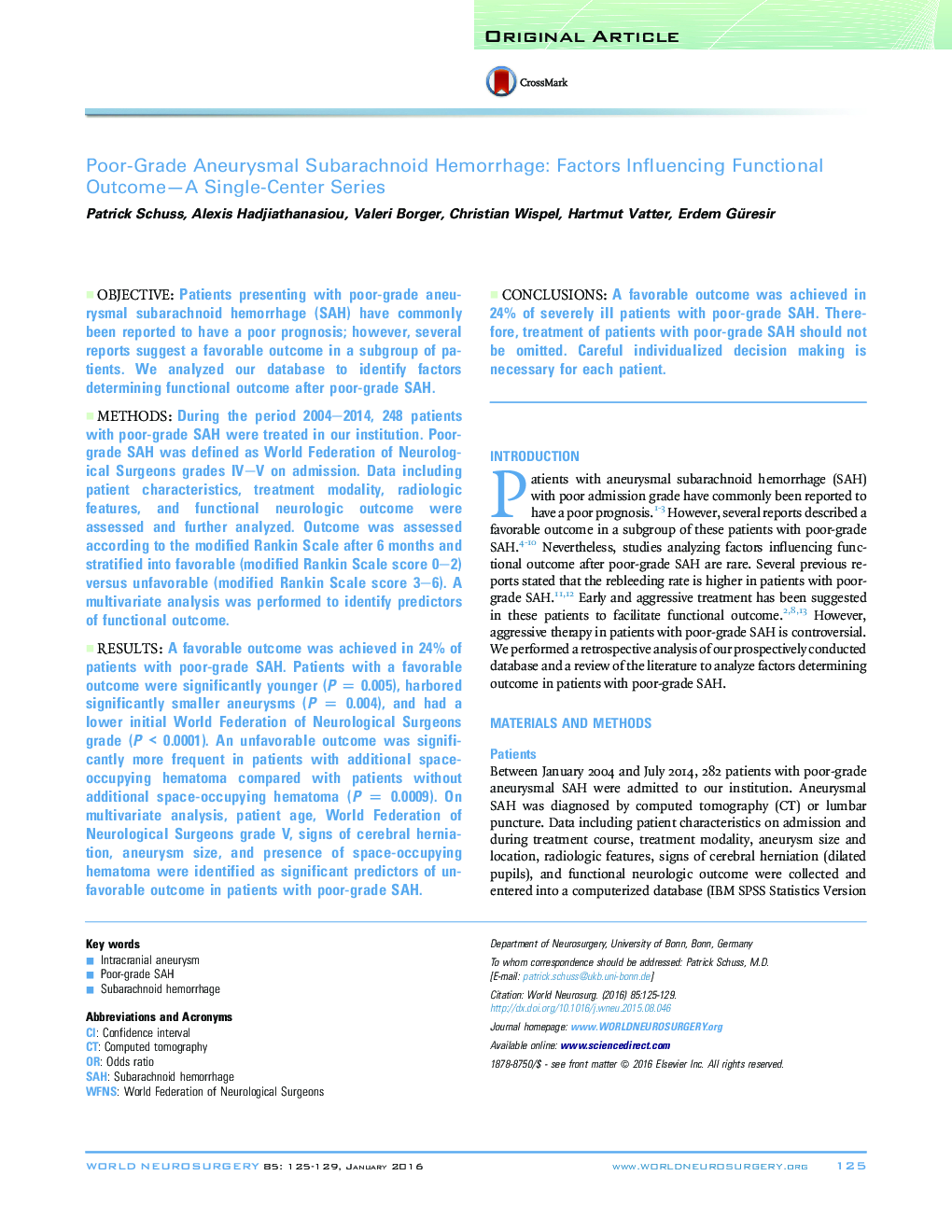| کد مقاله | کد نشریه | سال انتشار | مقاله انگلیسی | نسخه تمام متن |
|---|---|---|---|---|
| 3094886 | 1581470 | 2016 | 5 صفحه PDF | دانلود رایگان |
ObjectivePatients presenting with poor-grade aneurysmal subarachnoid hemorrhage (SAH) have commonly been reported to have a poor prognosis; however, several reports suggest a favorable outcome in a subgroup of patients. We analyzed our database to identify factors determining functional outcome after poor-grade SAH.MethodsDuring the period 2004–2014, 248 patients with poor-grade SAH were treated in our institution. Poor-grade SAH was defined as World Federation of Neurological Surgeons grades IV–V on admission. Data including patient characteristics, treatment modality, radiologic features, and functional neurologic outcome were assessed and further analyzed. Outcome was assessed according to the modified Rankin Scale after 6 months and stratified into favorable (modified Rankin Scale score 0–2) versus unfavorable (modified Rankin Scale score 3–6). A multivariate analysis was performed to identify predictors of functional outcome.ResultsA favorable outcome was achieved in 24% of patients with poor-grade SAH. Patients with a favorable outcome were significantly younger (P = 0.005), harbored significantly smaller aneurysms (P = 0.004), and had a lower initial World Federation of Neurological Surgeons grade (P < 0.0001). An unfavorable outcome was significantly more frequent in patients with additional space-occupying hematoma compared with patients without additional space-occupying hematoma (P = 0.0009). On multivariate analysis, patient age, World Federation of Neurological Surgeons grade V, signs of cerebral herniation, aneurysm size, and presence of space-occupying hematoma were identified as significant predictors of unfavorable outcome in patients with poor-grade SAH.ConclusionsA favorable outcome was achieved in 24% of severely ill patients with poor-grade SAH. Therefore, treatment of patients with poor-grade SAH should not be omitted. Careful individualized decision making is necessary for each patient.
Journal: World Neurosurgery - Volume 85, January 2016, Pages 125–129
